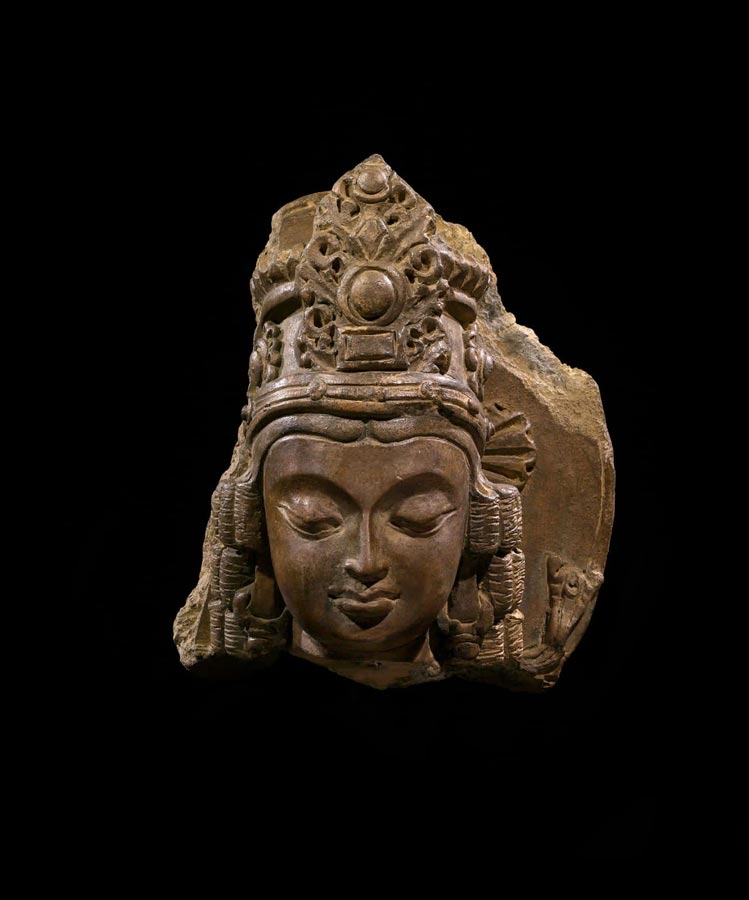A Pair of Bronze Palanquin Finials, Khmer, Angkor Vat period first half of 12th century, Bronze with Gilt Details
Height: 33 cms; Width: 11cm
A five headed naga with a spread hood decorates the tip of each of these finials. Elaborately cast, the naga with menacing fangs and darting tongues, rising from a singular body marked with carefully incised scales and a stylized lotus. Each naga displays a circular design on its chest, a design that resembles a blossom. The finials are finely cast by lost wax process and are hollow to accommodate the wooden poles. When members of the royal family or priesthood traveled in a public festival procession or to a temple like Banteay Chhmar to make offerings or participate in a ceremony, they would be carried in a palanquin, or a covered litter. Portable objects of veneration, such as bronze images or a sacred fire, were also carried on palanquins. The palanquins had wooden poles, hanging seats or raised platforms, and bronze fittings cast in intricate forms and gilt, lending the palanquins a sumptuous quality. Ornate palanquins of this type were an insignia of rank and often presented as gifts from Khmer rulers. The naga is an important symbol in Khmer art, tracing back to autochthonous origins. Depicted as a multi-headed cobra, it is closely associated with water and royalty. The bas reliefs of Angkor frequently depict ornate palanquins, chariots, and howdahs with naga finials.
Similar examples: Bunker Emma C, Latchford Douglas, Adoration and Glory: The Golden Age of Khmer Art, p. 325 plate

